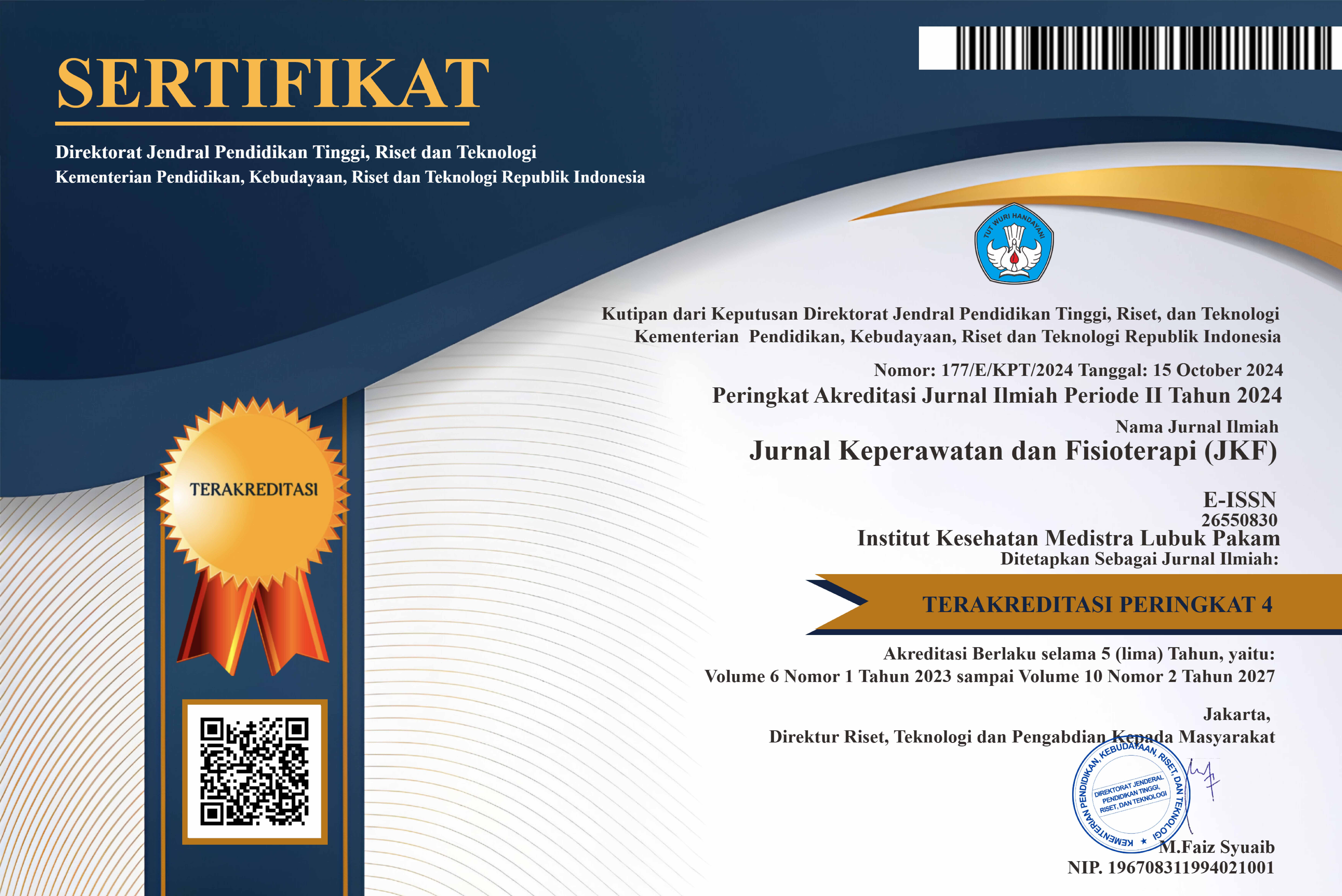The Relationship Between Lato-Lato Games And Decreased Gadget Use In Elementry School Age Children In Jati Kesuma village, Namorambe District Deli Serdang District, North Sumatera Province
DOI:
https://doi.org/10.35451/jkf.v6i1.1828Keywords:
gadget, lato-lato game, elementary school age childrenAbstract
The development of an increasingly advanced era at this time resulted in more and more changes that occur in people's lives. In the current era of globalization, there are many types of developments ranging from developments in science, technology to political, economic and cultural developments. Technology that is very popular in this era of globalization is gadget. Gadgets were once only used by the upper middle class, but their use is now used by various groups, ranging from early childhood to adults.
The research method used in this study is an analytical survey with a cross sectional approach. namely research that emphasizes the time of measurement or observation of data on the dependent variable and the independent variable is calculated at the same time or once. Factors that influence the level of lato-lato play with the use of gadgets include: parental age, parental education, child age and child gender. The results of statistical tests using the Chi Square test obtained a p value of
0.002. So that the p value ? 0.05. Based on statistical tests, it can be seen that there is a significant relationship between lato-lato games and decreased gadget use in elementary school-age children in Jati Kesuma Village, Namorambe District, so that the results of statistical tests can be interpreted as Ho is rejected.
And from the results of the above research, it can be suggested to parents to be aware of their children in the use of gadgets and more suggest to children to play games that can stimulate motor development and social development of children in the future.
Downloads
References
Ananda. (2023). Lato lato mainan berasal dari daerah mana? Berikut jawabannya. Retrieved from Steadfast:
https://steadfast- marine.co.id/lato-lato-mainan- berasal-dari-daerah/
Anggraeni, S. (2019). Pengaruh pengetahuan tentang dampak gadget bagi kesehatan terhadap perilaku penggunaan gadget pada siswa sdn kebun bunga 6 banjarmasin. Faletehan Health Journal 6(2), 64–68
Chen, L. L., Shen, C. Y., & Yang, S. C. (2016). A study of traditional game usage for preschool children’s motor development. Eurasia Journal of Mathematics, Science & Technology Education, 12(11), 2817-2832
Eka, A., Rokhanayah, L., Lestari, W., & Rokayah, N. S. (2022). Penurunan frekuensi penggunaan gadget pada anak sd / mi dengan mantra sipil. Journal of Community Health Development 3(1), 48–54
Hablaini, S., Lestari, R. F., & Niriyah, S. (2020). Hubungan penggunaan gadget dengan kuantitas dan kualitas tidur pada anak sekolah ( kelas iv dan v ) di sd negeri
kota Pekanbaru. Jurnal Keperawatan Abdurrab 4(1), 26–37
Kolb, A. Y., & Kolb, D. A. (2010). Learning to play, playing to learn: A case study of a ludic learning space. Journal of Organizational Change Management, 23(1), 26-50
Notoatmodjo S. 2018. Metode Penelitian Kesehatan. Cetakan Ketiga. Jakarta: PT Rineka Cipta
Radesky, J, S., Schumacher, J., & Zuckerman, B. (2015). Mobile and interactive media use by young children: the good, the bad, and the unknown. Pediatrics, 135(1), 1-3
Seo, M., & Lee, S. (2020). Effects of parents’ smartphone addiction and parenting behavior on children’s smartphone addiction: the moderating effect of parental age. International Journal of Environmental Research and Public Health, 17(17), 6154
Sulaiman, S. S., Muhamad, N. B., & Rusli, I. F. (2018). Relationship between traditional games participation and motor skills among pre-school children in Malaysia. Malaysian Journal of Sport Science and Recreation, 14(2), 65-78
Downloads
Published
Issue
Section
License
Copyright (c) 2023 Maximilianus Dasril Samura, Indah Febi Claudia

This work is licensed under a Creative Commons Attribution 4.0 International License.
Copyright in each article is the property of the Author.


























